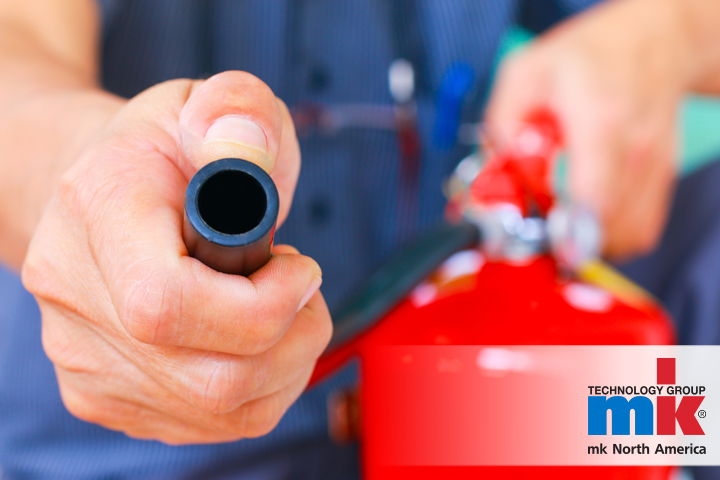Fire Safety & Prevention for Industrial Conveyor Systems
Posted on

The majority of industrial fires which begin on or around conveyor systems occur as a result of ignited coal dust in underground mining operations. But while the fire risks of the fossil fuel industry are well-known and documented, fires involving belt conveyors or other material handling systems are far from restricted to this sphere of production.
Conveyor systems are common in a number of applications where the risk of industrial fire is acute, such as chemical or food processing, shipping or receiving of flammable materials, and many more. Even with no aggravating circumstances, the risk of fire is present in any environment where electronic or actively-driven machinery is present, and poses a threat to the safety of people and property.
While the threat of fires can probably never be eliminated completely, there are a number of safety precautions and protocols that can be undertaken to mitigate this threat and protect the safety of workers. Let’s take a closer look at common causes of conveyor fires, how to address them, and other fire safety and prevention tips for use with industrial conveyor systems.
Common Causes of Conveyor Fires
While conveyors themselves are usually made of steel or aluminum and are therefore not flammable (though conveyor belts can be), they may cause or contribute to industrial fires due to factors such as the following:
- Flammable materials being carried on a conveyor may be combusted by external means and spread down the line.
- Friction caused by a conveyor belt slipping or losing traction may generate enough heat to result in a flame being formed.
- Overheated motors or drive units can sometimes generate enough heat to start a small fire.
- Cutting or welding operations involving open flames or molten metals can ignite conveyor belts or atmospheric dust particles.
- Other high-heat applications like pasteurization or kiln processing may also contribute to the risk of conveyor fires.
Though each of these factors could potentially pose a fire hazard on their own, many fires will be the result of some combination of these or other variables.
Conveyor Fire Safety: Steps and Precautions
The first and foremost step to reducing the risk of conveyor fires in any industrial environment is taking care of the conveyor system itself. Proper conveyor maintenance will reduce the risk of belt slippage, motor malfunctions, and other errors which can lead to fires or other hazardous situations. Proper machine guarding in keeping with OSHA standards can also help to prevent accidents by safeguarding sensitive or otherwise hazardous areas.
Non-combustible materials should be used for all conveyor system components wherever possible, especially in applications where flammable products or materials are present. Caution should also be taken to make sure that the conveyor system is properly grounded in order to prevent sparks caused by static electricity.
Linear heat detection systems can be installed along the length of any conveyor system to detect surges in heat and activate alarms and fire suppression systems. These systems are relatively easy to install, often consisting of a simple cable that is designed to cause a short circuit when its plastic casing melts at a specified temperature. Infrared heat detection systems may also be used.
Fire suppression should take the form of overhead water sprinkler systems installed along the length of the conveyor system. Such systems are often required by local building codes, insurance providers, and labor regulations depending on industry and jurisdiction. Sprinkler coverage should be as comprehensive as possible, but paying particular attention to areas containing conveyor systems may be advisable based on certain variables.
While this page is meant to provide a general overview of fires safety and prevention in relation to industrial conveyor systems, it is by no means comprehensive. For more information on industrial fire safety, please consult your local fire department, OSHA field office, local building safety regulations, National Fire Prevention Association codes and standards, and any other relevant local safety authorities.
